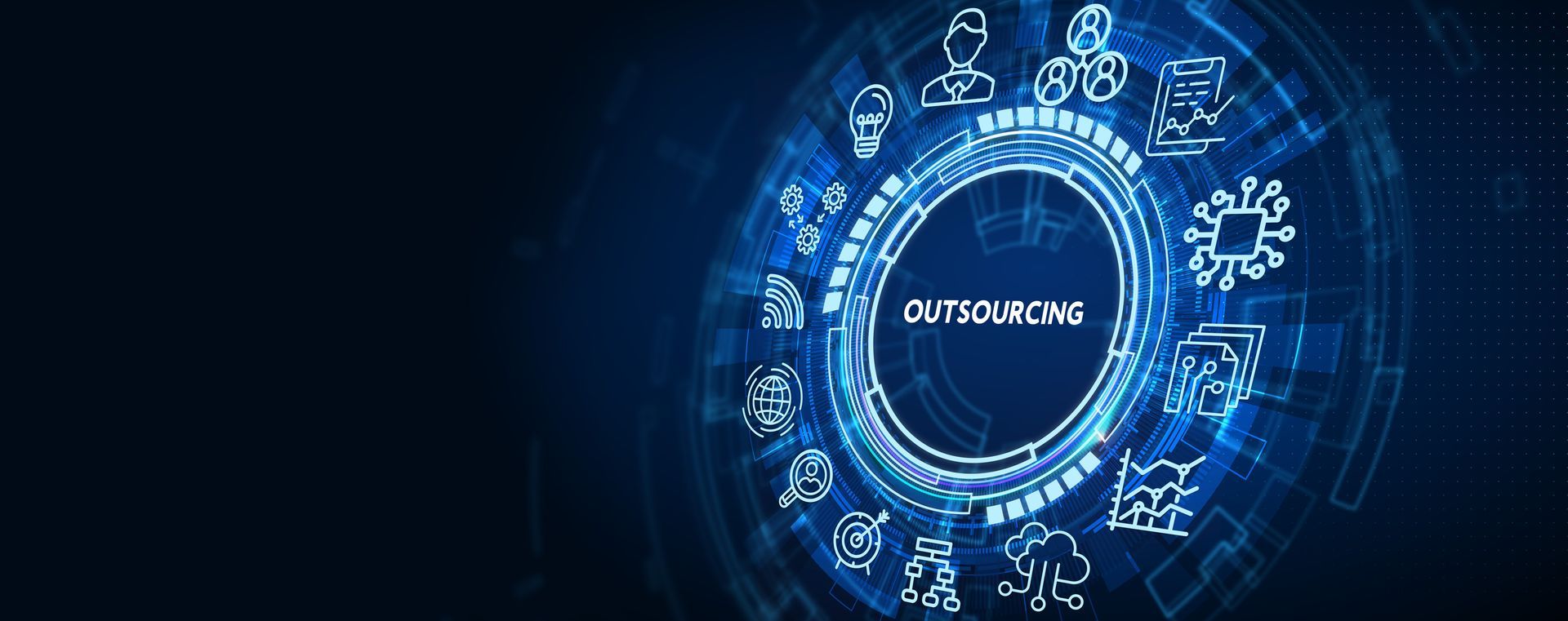The Future of Payroll You Can't Ignore
Are you tired of manual payroll processes that consume too much time and resources? The future of payroll is evolving rapidly, promising to streamline operations and enhance efficiency.
This blog post will explore key trends shaping the future of payroll. If you're a business owner or HR professional, staying ahead of these trends can provide a competitive edge and improve your workplace.
Read on to discover how automation, cloud computing, AI, and blockchain are revolutionizing payroll systems.
Automation is the Game-Changer
The Role of Automation in Payroll Processing
Automation simplifies repetitive tasks, allowing your HR team to focus on strategic initiatives. By automating payroll calculations, tax filings, and compliance checks, you can significantly reduce errors and save time. This trend is particularly beneficial for small businesses with limited resources.
Benefits of Automating Payroll
Automated payroll systems ensure timely and accurate payment processing. They can handle complex calculations, including overtime, bonuses, and deductions, without human intervention. Automation also enhances data security by reducing the risk of manual errors and unauthorized access.
Cloud Computing Takes Center Stage
Why Cloud-Based Payroll Systems Are Gaining Popularity
Cloud computing offers unprecedented flexibility and scalability in payroll management. With cloud-based systems, you can access payroll data from anywhere, anytime, making it easier to manage remote teams and multi-location operations. This trend aligns with the growing shift towards remote work.
Advantages of Moving to the Cloud
Cloud-based payroll systems provide real-time updates, ensuring that your payroll data is always current. They also offer seamless integration with other HR tools, such as time-tracking software and employee self-service portals. Furthermore, cloud solutions are typically more cost-effective than traditional on-premise systems, making them an attractive option for businesses of all sizes.
How to Transition to a Cloud-Based Payroll System
Switching to a cloud-based payroll system may seem daunting, but it doesn't have to be. Start by evaluating your current payroll processes and identifying areas for improvement. Next, research different cloud solutions and choose one that meets your needs. Finally, train your team on the new system to ensure a smooth transition.
Artificial Intelligence is Here to Stay
AI's Impact on Payroll Accuracy and Efficiency
AI-powered payroll systems can analyze vast amounts of data to make more accurate predictions and decisions. For example, AI can identify patterns in employee attendance and performance, enabling you to make data-driven adjustments to payroll. This trend is transforming how businesses approach payroll management.
The Benefits of AI in Payroll
One of the main advantages of AI in payroll is its ability to detect anomalies and prevent fraud. By continuously monitoring payroll data, AI can flag suspicious activities, such as duplicate payments or unauthorized changes to employee records. Additionally, AI can automate complex tasks, like tax compliance and benefit administration, freeing up your HR team for more strategic work.
Blockchain Brings Transparency and Security
Understanding Blockchain's Role in Payroll
Blockchain technology offers a decentralized, immutable ledger that records every transaction. This transparency makes it nearly impossible to alter payroll data without detection. Blockchain's security features are particularly appealing to businesses concerned about data breaches and fraud.
Benefits of Blockchain in Payroll Management
One of the most significant advantages of blockchain is its ability to provide end-to-end encryption, ensuring that payroll data is secure. Additionally, blockchain can streamline cross-border payments, reducing the time and cost associated with international transactions. This trend is especially beneficial for global businesses with diverse workforces.
The Rise of Employee Self-Service Portals
How Self-Service Portals Empower Employees
Employee self-service portals allow workers to access their payroll information, request time off, and update personal details without involving HR. This trend empowers employees and reduces the administrative burden on HR teams.
Benefits of Implementing Self-Service Portals
Self-service portals enhance transparency and employee satisfaction by providing easy access to payroll data. They also streamline administrative tasks, such
as updating bank details or withholding information, reducing the likelihood of errors. Furthermore, these portals can integrate with other HR systems, creating a seamless employee experience.
Steps to Implement a Self-Service Portal
To implement an employee self-service portal, start by selecting a platform that integrates with your existing payroll system. Next, develop a comprehensive training program to ensure employees can use the portal effectively. Finally, continually gather feedback and make improvements to enhance the user experience.
The Importance of Compliance in Payroll
Navigating the Complex World of Payroll Compliance
Compliance with labor laws and tax regulations is critical for any business. Failure to comply can result in hefty fines and damage to your company's reputation. Keeping up with changing regulations can be challenging, but it's essential for successful payroll management.
How Technology Can Help with Compliance
Modern payroll systems come equipped with features that help ensure compliance with local, state, and federal regulations. These systems can automatically update tax rates, generate compliance reports, and alert you to potential issues. By leveraging technology, you can reduce the risk of non-compliance and focus on your core business operations.
Customizable Payroll Solutions for Diverse Needs
The Flexibility of Modern Payroll Systems
Today's payroll systems offer a high degree of customization, allowing you to tailor them to your specific needs. Whether you manage a small team or a large workforce, customizable solutions can adapt to your unique requirements.
Benefits of Customizable Payroll Solutions
Customizable payroll systems provide the flexibility to handle various pay structures, including hourly wages, salaries, and commissions. They can also accommodate different reporting formats and integration needs, ensuring seamless operation alongside your existing HR tools. This adaptability makes them ideal for businesses of all sizes and industries.
How to Choose the Right Payroll System
When selecting a payroll system, consider factors such as scalability, ease of use, and integration capabilities. Look for solutions that offer robust customer support and regular updates to keep up with changing regulations and technological advancements. By choosing the right system, you can ensure a smooth and efficient payroll process.
The Role of Analytics in Payroll
Leveraging Payroll Data for Strategic Insights
Modern payroll systems generate vast amounts of data that can provide valuable insights into your workforce. By analyzing this data, you can identify trends, optimize labor costs, and make informed decisions to drive your business forward.
Benefits of Payroll Analytics
Payroll analytics can help you understand employee turnover, absenteeism, and overtime patterns. These insights can inform workforce planning and management strategies, leading to improved productivity and cost savings. Additionally, analytics can highlight areas where you may need to invest in training or other resources to support your employees.
The Future of Payroll Integration
The Importance of Seamless Integration
Integration with other HR and business systems is crucial for efficient payroll management. Seamless integration ensures that data flows smoothly between systems, reducing the risk of errors and redundancies.
Benefits of Integrated Payroll Systems
Integrated payroll systems can streamline processes such as time tracking, benefits administration, and performance management. They also provide a single source of truth for employee data, improving accuracy and reducing administrative burden. This integration is particularly beneficial for businesses with complex HR needs.
Steps to Achieve Seamless Integration
To achieve seamless integration, start by evaluating your current systems and identifying integration points. Next, choose a payroll solution that offers robust integration capabilities and work with your IT team to ensure a smooth implementation. Finally, provide training and support to ensure your team can effectively use the integrated system.
Mobile Payroll Solutions for On-the-Go Management
The Rise of Mobile Payroll Management
Mobile payroll solutions allow you to manage payroll processes from anywhere, at any time. This trend is particularly beneficial for businesses with remote or mobile workforces, providing flexibility and convenience.
Benefits of Mobile Payroll Solutions
Mobile payroll solutions offer real-time access to payroll data, enabling quick decision-making and issue resolution. They also provide employees with easy access to their pay information, enhancing transparency and satisfaction. Additionally, mobile solutions can integrate with other HR tools, ensuring seamless operation.
How to Implement a Mobile Payroll Solution
To implement a mobile payroll solution, start by selecting a platform that offers robust mobile capabilities. Next, develop a comprehensive training program to ensure your team can effectively use the mobile solution. Finally, continually gather feedback and make improvements to enhance the user experience.
The Role of Cybersecurity in Payroll
The Importance of Protecting Payroll Data
Payroll data is highly sensitive, containing personal and financial information about your employees. Protecting this data is critical to maintaining trust and complying with regulations.
Benefits of Enhanced Cybersecurity Measures
Enhanced cybersecurity measures can protect against data breaches, fraud, and unauthorized access. These measures include encryption, multi-factor authentication, and regular security audits. By investing in cybersecurity, you can ensure the integrity and confidentiality of your payroll data.
Steps to Enhance Payroll Cybersecurity
To enhance payroll cybersecurity, start by conducting a thorough risk assessment to identify potential vulnerabilities. Next, implement robust security measures and provide regular training to your team. Finally, stay updated on the latest cybersecurity trends and best practices to ensure ongoing protection.
Conclusion
The future of payroll is bright, offering numerous opportunities for businesses to streamline operations, enhance efficiency, and improve employee satisfaction. By staying ahead of trends like automation, cloud computing, AI, and blockchain, you can position your business for success in the evolving payroll landscape.
Ready to Revolutionize Your Payroll?
Don't let payroll headaches hinder your business's growth. Partner with Sela Tax & Accounting LLC and experience a seamless, stress-free payroll process.
Contact us today to learn more about our business
payroll services and how we can help streamline your operations. Your future of efficient payroll management starts now!
Call today for a free 15-min consultation

2024 © Sela Tax & Accounting



